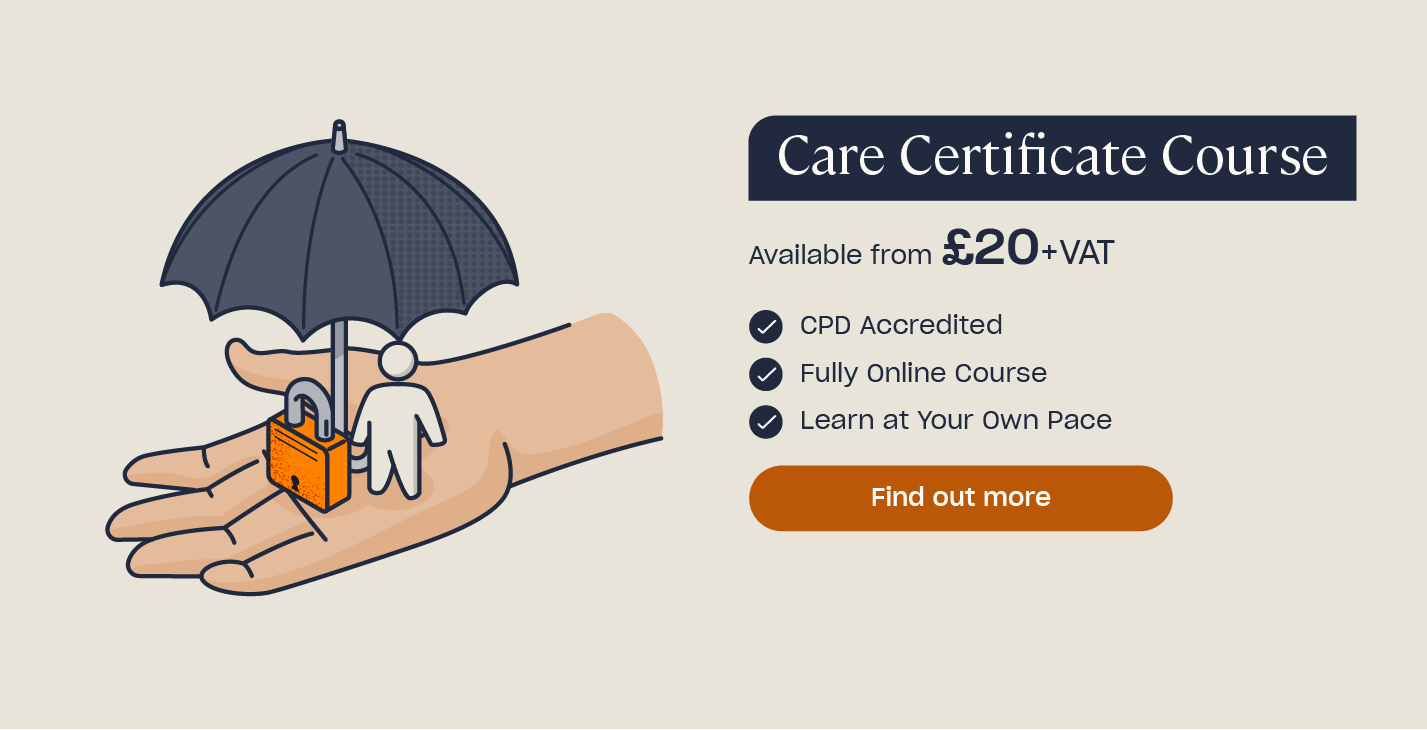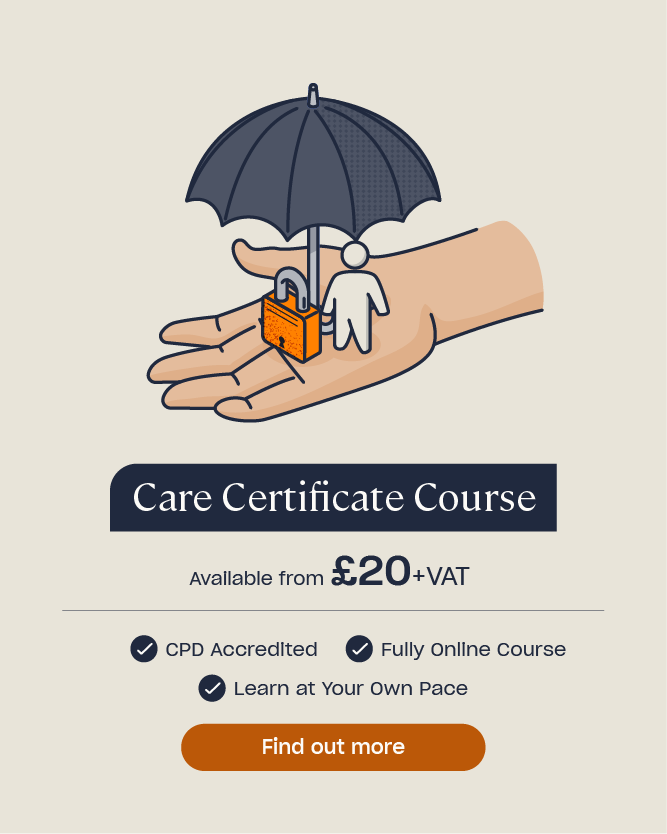Non-Verbal Communication in Health and Social Care
Communication is essential for all of us and it is especially important in health and social care settings where good communication makes all the difference to a patient’s experience and wellbeing. However, not everyone is able to communicate out loud and some patients will choose to communicate with you non-verbally. In this article, we’ll help you understand more about what non-verbal communication is and how it’s characterised, then provide some tips for interpreting and communicating with a patient through non-verbal communication methods.
What is Non-Verbal Communication?
Verbal communication is how we convey information to other people using spoken words. Non-verbal communication is how we convey information to others without speaking. Even if we’re silent, we’re still communicating meaning and emotions through our non-verbal actions and expressions.
Non-verbal communication can supplement spoken communication, such as hand gestures, eye contact and facial expressions whilst you’re talking, but it can also be the sole method of communication for some people. Some patients will use non-verbal communication methods as their primary way of communicating with you, whether by choice or by necessity.
Non-verbal communication can play an important role in building rapport with patients, providing them with emotional support and conveying clear messages and instructions. It includes everything from facial expressions, eye contact and hand gestures, to posture, tone of voice and physical presentation.

Types of Non-Verbal Communication
There are various elements of non-verbal communication, some of which are more subtle than others. Remember, all communication (whether verbal or non-verbal) goes both ways, so always be conscious of your own non-verbal cues, especially if they’re unintentional ones.
Consider the following examples of non-verbal communication in healthcare:
Facial Expressions
Facial Expressions
We convey a lot of meaning through our choice of facial expressions, whether voluntarily or involuntarily. Examples include smiling, raising eyebrows, frowning and pursing the lips – all of these can express an emotion or show how you or the patient really feel.
As a care provider, be sure to give patients a genuine smile in order to appear open and build rapport with them. Use your facial expressions carefully in order to convey empathy, trust and sincerity. Pay attention to the facial expressions of your patients to get an idea of how they really feel about a situation: do they look happy, concerned, thoughtful or indifferent?
Eye Contact
Maintaining regular eye contact with a patient shows that you are sincere, trustworthy and interested. When used appropriately, eye contact helps to build rapport and demonstrates to patients that you’re attentive to them. A lack of eye contact, however, can suggest disinterest, untrustworthiness or disengagement.
As a care provider, match your level of eye contact with the patient, trying to ensure you catch their eye when you have something important to tell them. However, be aware that not all patients will feel comfortable maintaining regular eye contact, whether for cultural reasons or because they are neurodivergent and find it difficult to do so, so interpret this element of non-verbal communication with sensitivity.
Body Language
Body language works alongside facial expressions as a type of non-verbal communication. Examples include posture, body position and head movements, like nodding and tilting the head to one side.
You can read a person’s body language to discover how they’re feeling. An upright posture with shoulders back and arms out suggests openness, confidence and approachability. However, a slouched posture with folded arms could indicate disinterest or hostility. Similarly, regular head movements like nodding and tilting the head can show engagement with the conversation, but directing the head away from a person can suggest an unwillingness to join in.
Hand Gestures
Using hand gestures is something most of us do whilst we’re talking out loud, whether it’s pointing, waving, showing open palms or interlocking the fingers. Hand gestures can be used to express our emotions, emphasise what we’re saying or even replace spoken words completely, like a thumbs up, high five or crossed fingers.
Use hand gestures to accompany your verbal communications in order to enhance meaning, encourage patients to join in the conversation and clarify what you’re trying to convey.
Touch
As long as the physical contact is appropriate, touch between a patient and a carer can be reassuring, comforting and welcoming. For example, giving a patient a pat on the shoulder, a touch on the arm, a handshake or a short rub on the back all convey unsaid reassurance.
A patient may use touch as a method of non-verbal communication in order to get your attention, say thank you or show their emotions.
Environment
It’s not only our actions (or lack thereof) that convey meaning – the environment around us and the way we physically present ourselves also provide non-verbal cues to patients. For example, your appearance, what you choose to wear and how well you keep yourself groomed can quickly communicate your level of responsibility, conscientiousness and professionalism to those you meet. Similarly, a clean and tidy environment can convey care, attention to detail and respect. All of these non-verbal elements can influence how a patient and their loved ones perceive you and your setting.

Importance of Non-Verbal Communication in Health and Social Care
There are many benefits of responding to and encouraging non-verbal communication in health and social care settings. Non-verbal communication enables you to:
- Build trust and rapport with your patients and clients.
- Better understand a patient’s needs and wishes.
- Enhance patient satisfaction.
- Make your verbal communications clearer.
- Promote more effective communication.
- Observe a patient’s unspoken emotions, feelings and concerns.
- Better convey empathy, understanding and emotional support for patients.
- Improve relationships.
- Reduce misunderstandings in verbal communications.
Looking to Learn More?
Our online Communication Skills Training and Communication Skills in Health & Social Care courses are ideal for staff in health and social care settings who want to understand more about how they can better communicate with and support patients.
Challenges and Barriers to Non-Verbal Communication
Non-verbal communication can be both a challenge and a blessing for health and social care professionals. Whilst it can improve communication and wellbeing for patients enormously, it can also cause barriers to understanding. By being aware of these challenges and working to address them, however, you can easily improve your non-verbal communication skills.
Challenges that health and social care professionals may face when using or observing non-verbal communication include:
- Limited understanding – non-verbal cues such as gestures, facial expressions and body language may carry different meanings across cultures or contexts, increasing the risk of misinterpretation.
- Personal variations – interpretation of non-verbal cues can differ due to individual factors, like life experiences, personality traits and cultural background. Patients with non-verbal learning disorders may also struggle to recognise or interpret these cues, potentially affecting their engagement. Likewise, autistic patients may experience difficulties with eye contact, facial expressions, personal space and other non-verbal communication, which can influence their interactions.
- Cultural variations – non-verbal communication styles can differ significantly between countries and among cultural groups, particularly in the use of eye contact, physical proximity and touch, all of which can affect the intended meaning.
- Mismatch between verbal and nonverbal messages – when spoken words do not align with body language or facial expressions, it can cause mixed messages and can lead to confusion or mistrust. For example, a patient claiming to feel well while displaying visible signs of distress.
- Lack of self-awareness – both care providers and patients may be unaware of their own non-verbal behaviours or the way they are perceived by others. This unconscious communication can sometimes act as a barrier to effective communication.
- Intentional misrepresentation – non-verbal communication can be used deliberately by patients in order to conceal their true emotions, feelings or intentions. Some patients may be particularly skilled at masking distress, for example.
- Environmental interference – background noise, interruptions or physical obstructions within a healthcare environment can all hinder the delivery and interpretation of non-verbal communication.

Non-Verbal Communication Strategies
Use the following 10 tips to ensure effective non-verbal communication:
- Maintain appropriate eye contact to build trust, show attentiveness and demonstrate empathy. Use steady, culturally-appropriate eye contact and avoid staring.
- Adopt an open and relaxed posture to convey openness, professionalism and approachability. Keep arms uncrossed, shoulders relaxed and body slightly leaned in when listening.
- Be mindful of facial expressions, as your face can show concern, empathy or confusion, even if you don’t want it to. Practice a soft, reassuring expression and avoid frowning or appearing distracted.
- Use appropriate gestures to reinforce your spoken words and clarify meaning. Use hand gestures naturally, avoiding excessive movements that may distract or confuse.
- Respect personal space as different patients have different comfort levels and being too close can feel invasive. Pay attention to cues like leaning back or fidgeting which may indicate that you’re too close.
- Match non-verbal cues with verbal communication, as inconsistencies can confuse or create mistrust. Ensure your tone, gestures and facial expressions align with what you’re saying.
- Use touch appropriately and thoughtfully; a gentle touch on the arm can be reassuring, but only when welcome. Always ask or assess comfort before using touch and remember to be culturally sensitive.
- Observe the patient’s non-verbal cues, as this helps you to gauge emotions like anxiety, confusion or discomfort. Look for signs like avoidance, fidgeting or lack of eye contact and respond with empathy.
- Stay calm and composed in challenging situations, as your choice of body language can either de-escalate or intensify the tension. Slow your breathing, keep gestures controlled and maintain a neutral expression.
- Adapt to individual needs, such as age, culture or disability, as non-verbal cues can vary. Learn what’s respectful and appropriate for each individual.
Non-verbal communication is how we convey meaning without using spoken words. It includes body language, facial expressions, hand gestures and posture, and should be used and observed carefully in health and social care settings. As a healthcare professional or care provider, understanding how to effectively communicate using non-verbal cues is often an essential part of the role and helps to ensure patients feel valued, heard and respected.
Further Resources:
- Care Certificate Course
- Promoting Effective Communication in Health and Social Care
- What is Asynchronous Communication?: Definition, Examples and Benefits
- How to Promote Empowerment in Health and Social Care
- How to Maintain Confidentiality in Health and Social Care
- What is Person-Centred Care and Why is it Important?







